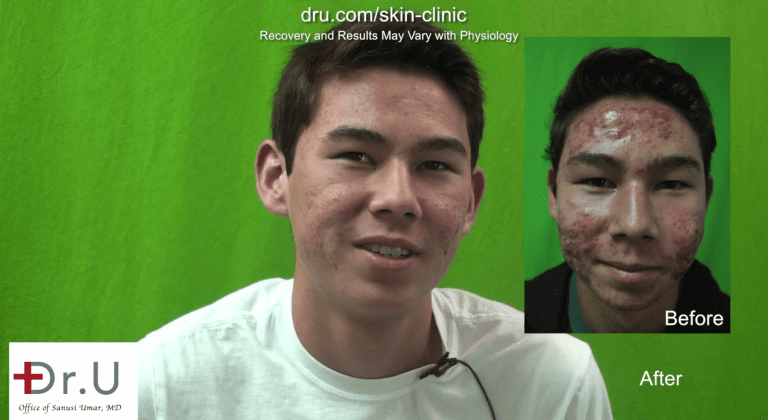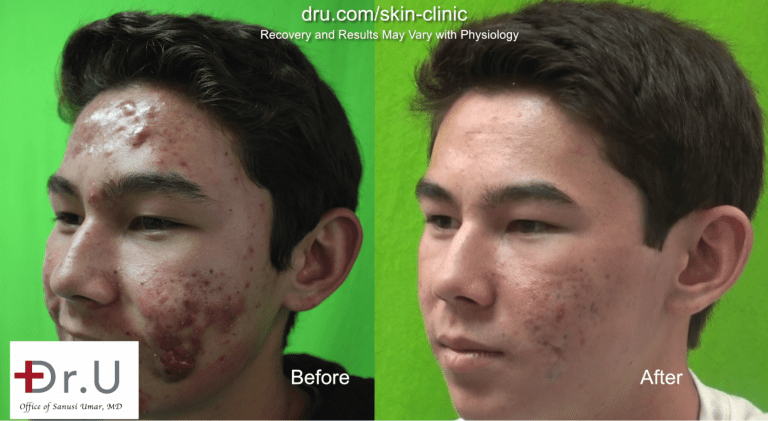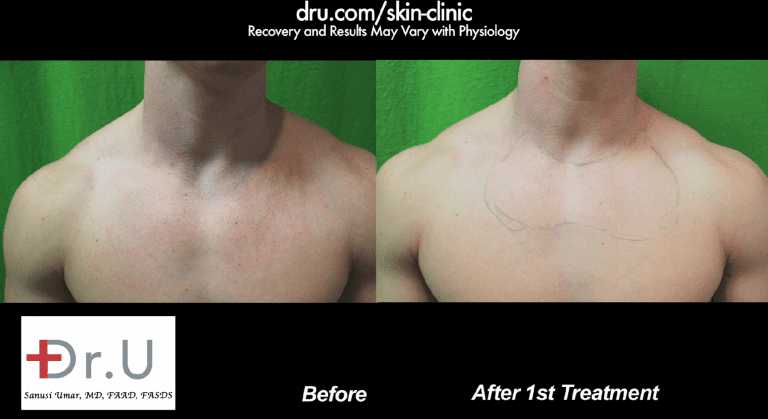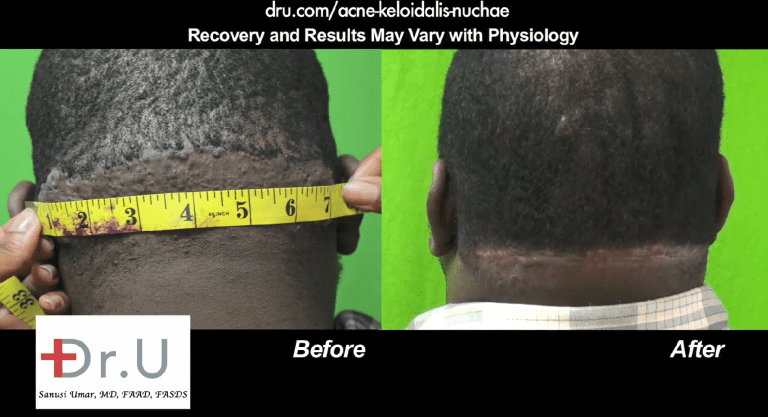Beauty culture is on the rise and demand for aesthetic enhancement is higher than ever before. This leaves people who struggle with serious, pre-existing skin conditions asking one pivotal question amid the fray: what is the difference between a medical dermatologist and a cosmetic dermatologist? And which do I need?
Those who are affected by acne, rosacea, or psoriasis can begin to rest easier with modern advancements in both medical dermatology and its cosmetic sister. The defining differences in these two practices are as follows:
- Medical Dermatology is the study and treatment (both medical and surgical) of diseases that affect the skin, hair, and nails.
- Cosmetic dermatology is primarily targeted toward improving the appearance of the skin and hair through medical treatment.
With many skin conditions–like the aforementioned acne, psoriasis, and rosacea–the disease negatively affects the appearance of the skin. These illnesses can wreak havoc on the skin’s surface, creating unsightly bumps, redness, hyperpigmentation, scarring, and more. The byproducts of skin disease are often deeply emotionally distressing. Patients who wish to not only resolve the illness itself but also restore the beauty of their skin will benefit from both medical and cosmetic dermatology treatments.
At Dr.U Skin Clinic of Los Angeles, Dr. Umar is a double board certified physician, with vast experience in both medical and cosmetic dermatology. Whether you need general skin rash help, psoriasis help, rosacea treatment, skin cancer treatment, or relief from acne, Dr. Umar is able to address the physiology of the problem as well as any accompanying aesthetic malformations. Having a doctor who’s dually qualified allows you to unveil your most beautiful skin in one convenient location, in the hands of a single doctor who can provide a comprehensive course of treatment.
What Conditions are Treated by a Medical Dermatologist?
A medical dermatologist sees and treats a wide array of illnesses affecting the skin, hair, and nails. These can be fungal, viral, bacterial, vascular, or cellular in nature; they can range in severity from mild discomfort to risk of mortality. One thing many of them have in common is their negative impact on the skin’s appearance. They include, but are not limited to:
- Psoriasis
- Rosacea
- Acne
- Skin cancer
- Acne keloidalis nuchae
- Seborrheic dermatitis
- Cysts
- Unwanted moles or birthmarks
- Pemphigus
- Hyperhidrosis
- Eczema
- Vitiligo
- Contact dermatitis and other rashes
What Conditions are Treated at Dr.U Skin Clinic in Los Angeles?
At Dr.U Skin Clinic, Dr. Umar offers an extensive range of treatments in order to provide the best, most comprehensive care for his patients in need of both medical and cosmetic solutions. His services not only target several dermatologic conditions, but are tailored to each patient’s unique situation–including age, skin type, ethnicity, and medical history. These variances typically alter the ideal course of treatment, and may be the deciding factor in the use of a PDL (pulsed dye laser) versus a fractional laser, for instance.
Dr. U’s years of experience and research give him the versatility and expertise to maintain a results-oriented practice, aiming for the healthiest and most radiant skin possible for every patient. The medical conditions he treats include:
Medical
- Psoriasis
- Rosacea
- Acne
- Skin cancer
- Acne keloidalis nuchae
- Seborrheic dermatitis
- Cysts
- Unwanted moles or birthmarks
- Pemphigus
- Hyperhydrosis
- Eczema
- Vitiligo
- Contact dermatitis and other rashes
Photos of Dr. U Patient Before and After Acne Treatment
This teenage patient struggled with severe nodulocystic acne, and had tried several types of treatments prior to visiting Dr.U Skin Clinic. Oral and topical medicines had failed to work, and his parents did not want him to be treated with due to its adverse side effects. His acne also left him with severe scarring.
The prescribed treatment was a series of photodynamic therapy with Levulan applied to the face, then VBeam laser, followed by Fraxel Dual laser to treat his scars. His results show remarkable improvement only six weeks following his final Fraxel session.


Watch the Video of this Patient’s Laser Acne Treatment Results
Mild acne pimples that result from environmental debris blocking the skin pores can often become easily resolved. However, there are also more pervasive forms of acne which manifest from blockages that form internally from the skin’s own physiology. More severe types of acne require the help of a skilled dermatologist.
In the video below, Dr. Umar discusses with the young patient the treatment plan he devised for his severe acne and acne scars. The patient affirms that he has benefitted from this treatment in many other ways, such as being more social and spending more time with friends.
Tailoring the Treatment to the Patient in Medical Dermatology
Any dermatologist you choose, for whatever treatment you require, must be well acquainted with the need to tailor their procedure and their devices or medications to correspond with the unique patient needs–of course, with the best outcome in mind. They should be aware of any contraindications or risk factors from case to case.
For instance, laser treatments are the front-running technology for an array of ailments, such as acne and acne scarring, spider veins, rosacea, sagging skin, and much more. However, several lasers are too harsh for people with darker skin, due to highly active melanin. These lasers can actually cause scarring and hyperpigmentation when used on dark complexions. Therefore, the treatment plan for acne in a Caucasian patient versus an African American patient will look quite different. This is only a simple example, with many other considerations as mentioned above–patient age, skin type, ethnicity, medical history, etc.
Contact Dr.U Skin Clinic for a free consultation to find out about Dr. U’s custom treatment plan, designed specifically for you and your best outcome.
[dt_button link=”/hair-surgery/free-consultation/” target_blank=”false” button_alignment=”center” animation=”fadeIn” size=”big” style=”default” bg_color_style=”default” bg_hover_color_style=”default” text_color_style=”default” text_hover_color_style=”default” icon=”fa fa-chevron-circle-right” icon_align=”left”]FREE CONSULTATION[/dt_button]Leading Treatments Used by Medical Dermatologists for Skin Conditions
The standard of care for all medical dermatologists falls into three categories, when treating skin conditions:
- Lasers and light therapy
- Topical/oral medications
- Surgery
Lasers and Light Therapy for Rosacea Treatment, Acne, Anti-Aging, and Scars
Lasers have become the go-to tool for targeting many different skin diseases and superficial concerns. The type of light they use, the concentration/wavelength of light, the color of light, and the way the light is dispensed all alter how the laser works.
Some lasers are ablative, meaning they vaporize deep tissue in order to remove unwanted scarring and damage while encouraging tissue repair. These include the Fraxel Repair and other CO2 and Erbium lasers.
Some lasers specifically target red tissue and vascular issues, destroying broken capillaries in order to clear conditions like rosacea. These include the V Beam pulsed dye laser, among others.
There are also non-ablative fractional lasers which use gentle, yet effective heat to encourage the growth of elastin for safe anti-aging benefits. These include the Fraxel Dual laser.
Then there are other types of photodynamic therapy (PDT), which utilize multiple wavelengths, such as blue light to clear away the bacteria that are causing acne lesions. Pulsed dye lasers can also target acne.
A list of common lasers / photodynamic treatment capabilities for skin is as follows (this list is not comprehensive):
- Fractional lasers–used for skin resurfacing to smooth fine lines, scars, and uneven pigment (including tattoo removal, psoriasis, and vitiligo)
- CO2, Erbium, Fraxel
- Photodynamic therapy (PDT)
- Excimer/exciplex laser
- Nd-Yag laser
- Alexandrite laser
- Vascular lasers–used for all vascular conditions such as rosacea treatment, psoriasis help, and alleviating red acne
- V Beam
- Intense Pulsed Light (IPL/photofacial)–used for sun damaged skin in order to reduce excessive redness
Photos of Rosacea Treatment at Dr.U Skin Clinic
Rosacea is a progressive vascular skin disease that manifests as a continued form of redness on areas like the face, neck, and chest. The exact causes are unknown other than the fact that there is an increased amount of blood flow to the skin’s surface. This often follows an environmental exposure to some type of triggers such as food, temperature, exercise, medication or emotional stress.
This patient began noticing redness on his upper chest, which was gradually worsening. Seeking out rosacea treatment early on, he presented to Dr.U Skin Clinic for help. Dr. U restored his skin to a clear and normal appearance after only a single session with the V Beam 585 nm pulsed dye laser.

Video: Patient’s Rosacea Treatment Results
In the video below, Dr. Umar develops a treatment plan for a patient suffering from Rosacea. He underwent 3 treatments and saw results as early as after the first treatment.
Treatment for Unwanted Birthmarks
Birthmarks generally occur as an area of discoloration on the skin. They are oftentimes considered undesirable when they are present on highly noticeable areas of the body, such as the face or neck.
There are two general types of birthmarks:
- Vascular birthmarks, which result when surface blood vessels are either prolific and concentrated into a single area, or too large in diameter which increases the flow of blood to the skin.
- Pigmented birthmarks which form when pigment-producing melanocyte cells aggregate into a specific region creating a discolored skin area.
These issues can be treated by making precise adjustments at the level of the tiny structures which give rise to unwanted discoloration. Lasers offer an ideal choice of treatment for birthmarks because they can work below the skin’s surface to destroy pigmented producing cells as well as superficial blood vessels that contribute to birthmarks.
Topical/Oral Medications for Skin Rash Help, Psoriasis Help, and Acne Relief
Topical and/or oral medications are often the first line of defense prescribed by a medical dermatologist. Such medications are usually sufficient when seeking skin rash help, and are often very helpful for acne. For more extreme conditions and interventional treatments, such as relief from nodulocystic acne or psoriasis help, a medical dermatologist might prescribe a combination of medications with laser therapy.
Medicines commonly prescribed by a medical dermatologist include (but are not limited to):
- Antibiotics
- Antifungals
- Steroids
- Corticosteroids
Surgery for Acne Keloidalis Nuchae, Cysts, and Tumors
Surgical procedures are far more invasive than lasers and injectables and require a surgeon with a high level of skill and practice. In most dermatologic cases, surgery refers to the excision of a cyst or tumor. Additionally, it may involve the removal of keloid-like plaques of skin caused by AKN (acne keloidalis nuchae).
Acne Keloidalis Nuchae is a skin condition that often starts as small pimple like bumps on the back of the neck. When left untreated, these lesions will eventually fuse together into a single large tissue mass. At the point, surgical excision of the AKN is the only way to get rid of this manifestation.
Photos of Acne Keloidalis Nuchae Surgery at Dr.U Skin Clinic
This patient struggled for years with the advancement and growth of his AKN condition, over which time he’d been prescribed oral and topical antibiotics, steroids, and steroid injections. Unfortunately, all these treatments failed.
He chose Dr. U for his physician and underwent a specialized excision surgery at Dr.U Skin Clinic. Within a matter of months post-surgery, the AKN was gone and the excision wound was healing well. Dr. Umar intentionally placed the excision site at the base of the hairline, so as to cover the scar–which will grow thinner and lighter with time.

Video: Results of AKN Surgery by Medical Dermatologist
In the video below, Dr. Umar excises the patient’s AKN using a unique shape, which results in an easily concealable, straight scar at the base of the hairline. The patient says that as a result of the successful surgery, “I got my life back”.
What Makes Dr. Umar a Leading Medical Dermatologist
Dr. Umar is board certified in both Internal Medicine and Dermatology, with fellowship training in Cosmetic Surgery. His continued research and development of new tools and technologies has served hundreds of patients, raising the bar for successful outcomes.
Research and Work
Dr. Umar is widely published in the fields of dermatology and medicine. His findings range from improving innovations in hair restoration to shedding light on bone mineral density in women with AIDS. Currently, he holds the position of the Scalp and Hair Disorders section of Harbor-UCLA residency program’s Director of Cosmetic Dermatology.
If you are interested in speaking to Dr. Umar about a particular medical skin condition, click this button to schedule a complimentary initial consultation.
[dt_button link=”/hair-surgery/free-consultation/” target_blank=”false” button_alignment=”center” animation=”fadeIn” size=”big” style=”default” bg_color_style=”default” bg_hover_color_style=”default” text_color_style=”default” text_hover_color_style=”default” icon=”fa fa-chevron-circle-right” icon_align=”left”]FREE CONSULTATION[/dt_button]Frequently Asked Questions – Medical Dermatologist
Can cosmetic patients benefit from someone who is also a medical dermatologist? Or should they choose someone who only specializes in cosmetic dermatology?
Yes, cosmetic patients can absolutely benefit from a doctor who is also a medical dermatologist, especially if they have a pre-existing skin condition. A dermatologist with expertise in both areas can, for example, offer a more comprehensive and individualized treatment plan for cases that are relatively more challenging due to such medical issues.
At what point should I see a medical dermatologist for skin rash help?
This depends on the severity and size of the rash, how long you’ve had it, and how much pain or discomfort it’s causing. Of course, if there is severe pain, you should visit an urgent care center right away for skin rash help. If you’re unsure whether you should see a medical dermatologist, you may want to text or email a picture of it to your primary care physician for a professional opinion.
When should I see a medical dermatologist for psoriasis help?
If you think you may have psoriasis, schedule an appointment with your doctor right away. Getting psoriasis help early on may prevent the condition from worsening. Any indication of bacterial infection in the skin, accompanied by pain, swelling, tenderness, redness, heat, or pus are potential symptoms of psoriasis.
Have more questions for Dr. U about medical dermatology? Use this button to ask away:
[dt_button link=”/skin-clinic/ask-dr-umar/” target_blank=”false” button_alignment=”center” animation=”fadeIn” size=”big” style=”default” bg_color_style=”default” bg_hover_color_style=”default” text_color_style=”default” text_hover_color_style=”default” icon=”fa fa-chevron-circle-right” icon_align=”left”]ASK DR. U[/dt_button]
Further Reading – Medical Dermatologist
Learn more about laser treatments for acne here.
Read about different types of dermal fillers and their uses here.
